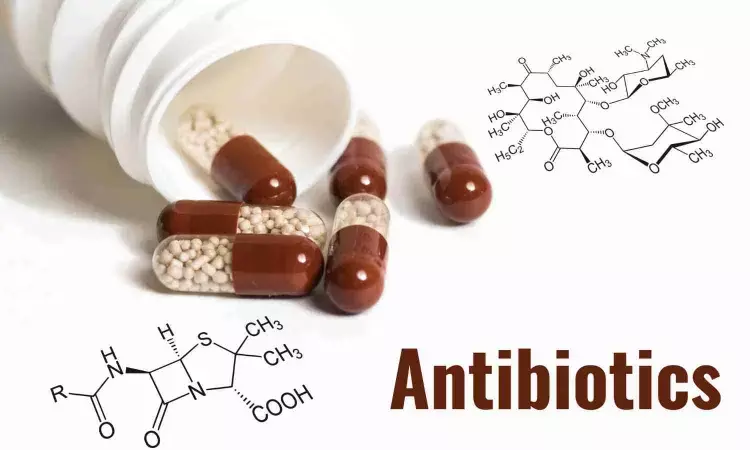- Home
- Medical news & Guidelines
- Anesthesiology
- Cardiology and CTVS
- Critical Care
- Dentistry
- Dermatology
- Diabetes and Endocrinology
- ENT
- Gastroenterology
- Medicine
- Nephrology
- Neurology
- Obstretics-Gynaecology
- Oncology
- Ophthalmology
- Orthopaedics
- Pediatrics-Neonatology
- Psychiatry
- Pulmonology
- Radiology
- Surgery
- Urology
- Laboratory Medicine
- Diet
- Nursing
- Paramedical
- Physiotherapy
- Health news
- Fact Check
- Bone Health Fact Check
- Brain Health Fact Check
- Cancer Related Fact Check
- Child Care Fact Check
- Dental and oral health fact check
- Diabetes and metabolic health fact check
- Diet and Nutrition Fact Check
- Eye and ENT Care Fact Check
- Fitness fact check
- Gut health fact check
- Heart health fact check
- Kidney health fact check
- Medical education fact check
- Men's health fact check
- Respiratory fact check
- Skin and hair care fact check
- Vaccine and Immunization fact check
- Women's health fact check
- AYUSH
- State News
- Andaman and Nicobar Islands
- Andhra Pradesh
- Arunachal Pradesh
- Assam
- Bihar
- Chandigarh
- Chattisgarh
- Dadra and Nagar Haveli
- Daman and Diu
- Delhi
- Goa
- Gujarat
- Haryana
- Himachal Pradesh
- Jammu & Kashmir
- Jharkhand
- Karnataka
- Kerala
- Ladakh
- Lakshadweep
- Madhya Pradesh
- Maharashtra
- Manipur
- Meghalaya
- Mizoram
- Nagaland
- Odisha
- Puducherry
- Punjab
- Rajasthan
- Sikkim
- Tamil Nadu
- Telangana
- Tripura
- Uttar Pradesh
- Uttrakhand
- West Bengal
- Medical Education
- Industry
Ten-minute breath test to monitor antibiotic concentrations: Study

Exhaled breath may be very promising alternative to blood for the therapeutic monitoring of antibiotics, the ESCMID Global Congress (formerly ECCMID) in Barcelona, Spain (27-30 April) will hear.
Therapeutic drug monitoring (TDM) is used to monitor antibiotic concentrations in patients with severe infections and in patients in intensive care units. These patients may metabolise drugs differently and so may not respond to conventional doses of antibiotics (they require higher doses) or be more likely to develop toxic side-effects (they require lower doses). The TDM results allow the dosage to be tailored to their needs.
“Currently, we use blood samples to do this,” says lead researcher Dr Sarah Dräger, of the Division of Internal Medicine, University Hospital Basel, Basel, Switzerland. “But the collection of blood is an invasive, time- and resource-consuming technique and leads to discomfort in patients.
“It takes several hours or even days to get results, depending on the antibiotic tested, and so the results may come too late to guide the treatment of some of the sickest patients.
“Using exhaled breath has several advantages: it is non-invasive, it is easy to collect and it is not associated with discomfort to the patient. It also has the potential to decrease the turnaround time, especially when combined with real-time analyses, when it could provide results in as little as ten minutes.
“It is already used to monitor other drugs, such as antiseizure medicines, and we wanted to explore its potential in monitoring antibiotics.”
Dr Dräger and Professor Pablo Sinues, head of the Translational Medicine Research Group at the University Children's Hospital of Basel, conducted a prospective, single-centre proof-of-concept study involving 10 patients (median age 63 years, 54.5% female) who received intravenous antibiotic treatment in 2022 or 2023.
They were being treated for respiratory infections (n=3), intravascular infections (n=3), abdominal infections (n=2), urinary tract infection (n=1) or skin and soft tissue infection (n=1) with meropenem (n=3), piperacillin/tazobactam (n=3), cefazolin (n=2), flucloxacillin (n=1) or ciprofloxacin (n=1).
Mass spectrometry was used to analyse samples of exhaled breath for exogeneous metabolites (breakdown products of the antibiotic) and endogenous metabolites (breakdown products from the body that are affected by the antibiotic).
With four antibiotics-meropenem, cefazolin, flucloxacillin and ciprofloxacin-it was possible to detect differences in the levels of specific metabolites. With one antibiotic, piperacillin/tazobactam, no clear signal was detected.
The hope is that by measuring levels of these metabolites it will be possible to monitor antibiotic concentrations without taking blood samples.
Dr Dräger says: “We were able to detect antibiotic-specific metabolites in exhaled breath in patients treated with antibiotics in four out of five antibiotics investigated.
“We aim to confirm these very promising results in a larger cohort of patients, as well as look at how they relate to blood plasma concentrations of antibiotics and patient outcomes.”
Reference:
Ten-minute breath test to monitor antibiotic concentrations, European Society of Clinical Microbiology and Infectious Diseases, Meeting: ESCMID Global (ECCMID 2024).
Dr Kamal Kant Kohli-MBBS, DTCD- a chest specialist with more than 30 years of practice and a flair for writing clinical articles, Dr Kamal Kant Kohli joined Medical Dialogues as a Chief Editor of Medical News. Besides writing articles, as an editor, he proofreads and verifies all the medical content published on Medical Dialogues including those coming from journals, studies,medical conferences,guidelines etc. Email: drkohli@medicaldialogues.in. Contact no. 011-43720751


